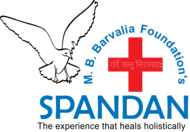Nosodes: Comprehensive Classifications and Some Reflections.
– Dr. P. Y. Devadiga (L.C.E.H.)
When I undertook to write this article, I had thought it a piece of cake as I had the feeling that to update the list of nosodes and sarcodes is an easy job. It was not so easy, as I started having difficulties on reading the books.
Nosodes – By definition a nosode is “a medicine prepared from the diseased part or discharge of a living being.” It is derived from the Greek word “nosos” meaning disease. They may be of vegetable kingdom (secale) or animal kingdom (Ambragrisea) or bacterial culture of Human origin (Psorinum).
While listing the names of nosodes, some queries did arise in my mind. One was regarding the origin. Dr. William Lux who is considered to be the founder of Isopathy, used the discharges of human and animals to treat the people. Hering used it after proving it on humans as homoeopathic remedies.
Some of the drugs used in Isopathy are Anthracinum, Cholelithinum (Cholesterinum), Hippozaenum, Hydrophobinum, Influenzinum, Medorrhinum, Morbillinum, Scarlatinum, Variolinum, etc. There were other remedies like Alveolinum, Ascardinum, Balanorrhinum, Gonorrhinum, Helinum, Nephrolithinum, Otorrhinum Lominum etc. which could be used but due to have been discarded due to lack of standardization.
Some of the nosodes are questionable e.g.
- Ambragrisea – It is not clear whether it is a healthy or unhealthy discharge of the sperm of whale i.e. whether it is a sarcode / nosode.
- Malaria Officinalis – It is not a discharge but is called vegetable nosode as it is swamp mire that has been potentised.
- Bacteria/Fungi are animals or plants in their own right. They are labeled nosodes because they are pathological to other beings. Inspite of this, quite a few fungi are left out of the list of nosodes.
Nosodes are divided into four groups and designated N-1, N-11, N-111, N-IV, depending upon the nature of material used. N-1 is made from lysates of micro-organisms capable of producing bacterial endotoxin e.g. Typhoidinum, Bacillinum, etc. N-ll is prepared from microorganisms capable of producing extra-cellular toxins, e.g. Diphtherinum, Anthracinum etc. N-111 is prepared from pure toxins. N-IV are made from micro-organisms, virus, clinical materials from human-convalescents or diseased subjects, e.g. Variolinum, Psorinum etc. Query – When drugs are prepared directly from microorganisms or virus – can we label them as diseased or should they be put under animal kingdom? The name nosodes has given way to a new term – “Bio-therapeutics” which seem to be more appropriate. They include diseased products, disease causing organisms and disease preventing vaccines and toxins. These thoughts and queries will not alter the use of the remedies but will change the understanding of the term nosodes.

